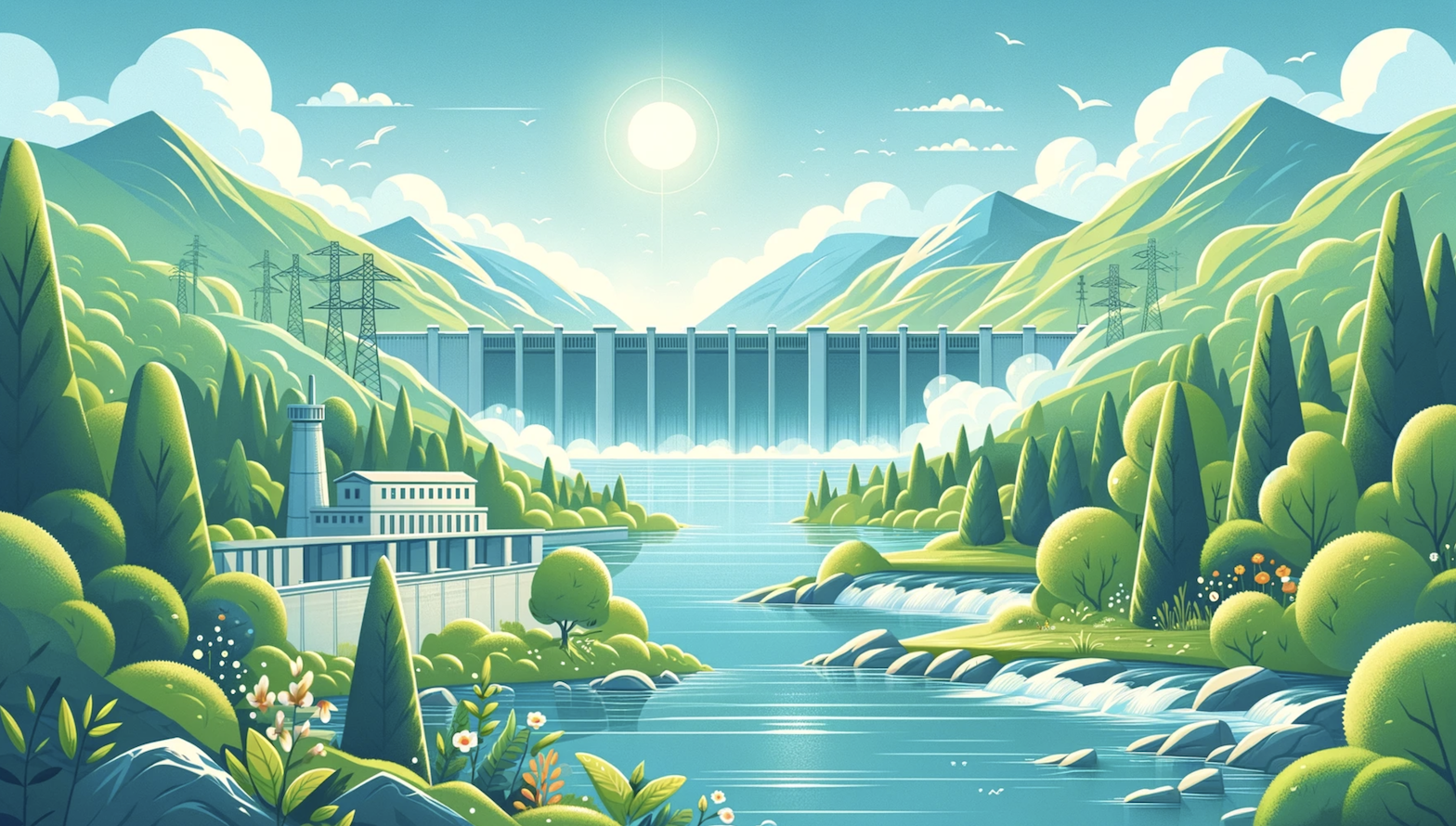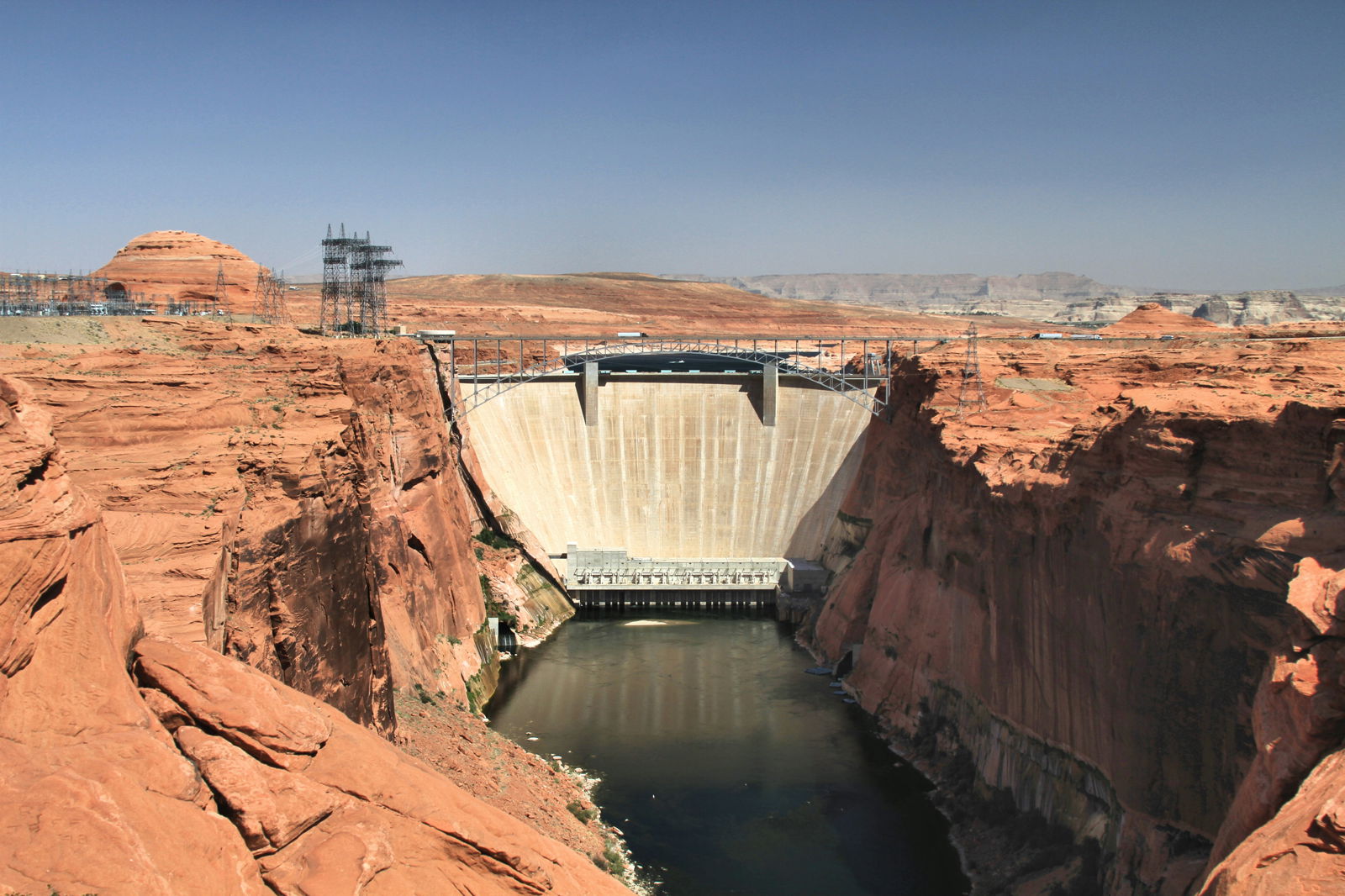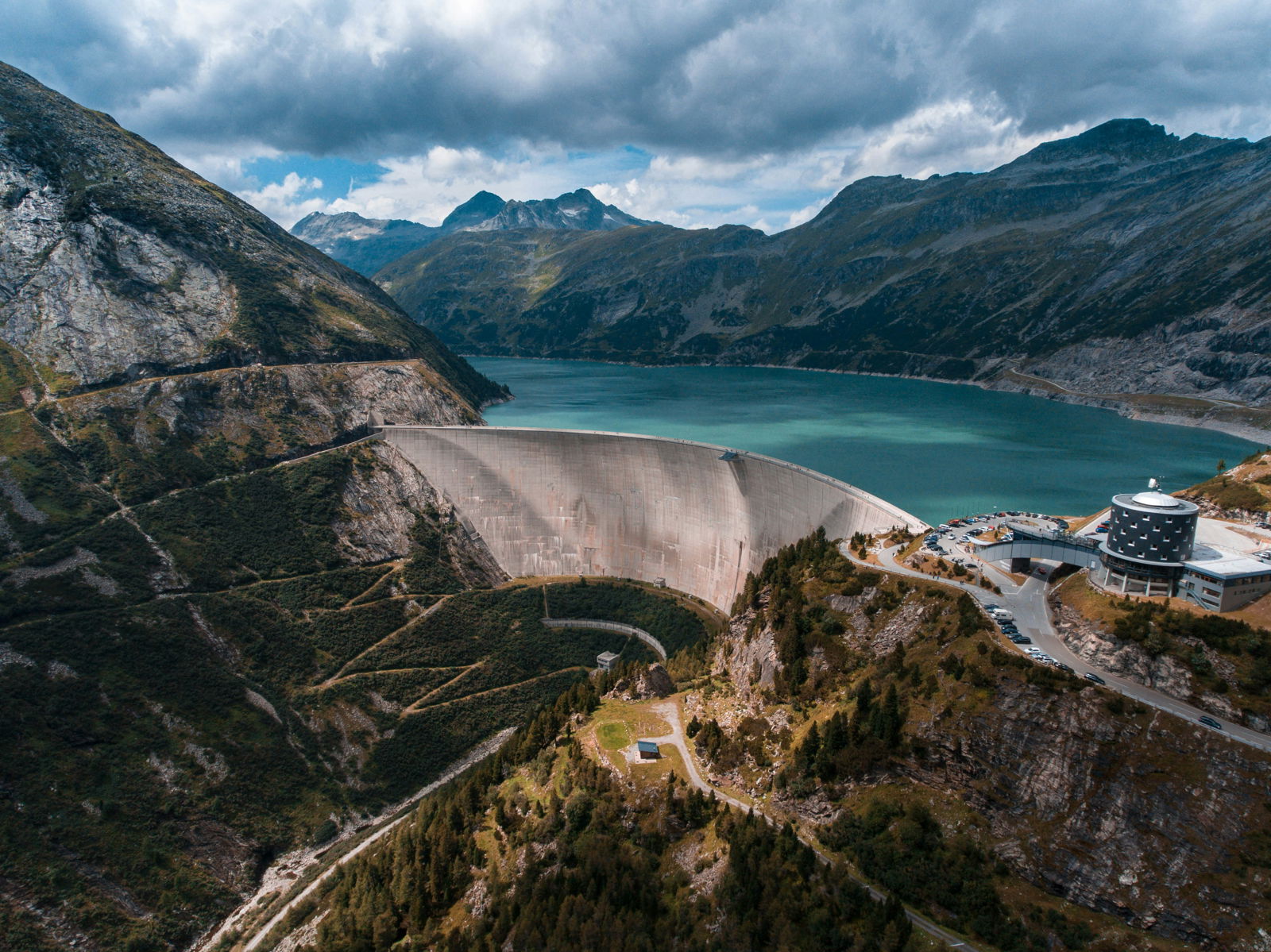Exploring the pros and cons of Hydropower as an energy source


· 10 min read
This article is part of our series to spread free & quality sustainability knowledge for all. Compare on Data Hub™ the sustainability performance of the largest hydropower firms: EDF, Iberdrola, Enel, Statkraft, and Hydro-Québec.

Clean energy is becoming more important as greenhouse gasses cause global climate change. Traditional energy sources such as coal, oil, and gas are the largest contributors to global warming, taking over 75% of greenhouse gas emissions and 90% of CO2 emissions.
Hydropower is a form of renewable energy that’s safer, cleaner, and more sustainable. How does hydropower work and what are its limitations? Let’s find out more about this promising source of hydroelectric power.
Hydropower is one of the oldest sources of renewable energy that’s generated by using the natural flow of water. The history of hydropower started thousands of years ago when ancient Chinese used water to pound and hull grain as well as make paper.
The first inkling of the modern water turbine was created by French engineer Benoit Fourneyron, which successfully managed to produce electricity. Then came the Francis turbine by a British-American engineer James B. Francis, the technology that remains the most commonly used until today.
The late 1800s saw numerous hydroelectric projects being established. One of the most noted developments was the world’s largest hydropower project at the time, the Edward Dean Adams Power Plant at Niagara Falls in 1895.
Hydropower kept growing as demands on electricity generation from industrialization rose, but the trend halted in the 1990s. This was due to financial constraints and concerns about the environmental impacts of hydropower constructions.
Hydropower regained momentum in the 2000s to fulfill the energy demands of developing countries and as a form of action to support Sustainable Development Goals.

Hydroelectric power plants generate electricity by using kinetic energy to generate power. Hydroelectric plants utilize the difference in elevation and natural water flow or fall from one point to another to push and turn the blades in a turbine which then creates electricity. The electricity generated is then fed into houses, businesses, industries, and facilities.
That’s why the amount of energy generated is entirely dependent on the water cycle and availability. The water cycle starts with water evaporating, condensing, and being released again into the water system through rain.
As rain falls into rivers, lakes, and oceans, the natural water cycle helps generate hydropower. However, reliance on the water cycle makes hydroelectric power plants not as effective during periods of droughts, water scarcity or peak demand.

Hydroelectric power remains the largest renewable energy source when compared to others such as solar and wind. In 2022, the energy generated from hydroelectric power plants reached 4,300 TWh, which was an increase of 2% from the previous year.
The largest producers and consumers of hydropower are China, Brazil and Canada. These countries consumed 12.23 exajoules, 4 exajoules, and 3.7 exajoules respectively in 2022. They also produced approximately 1,303 terawatt hours, 428.06 terawatt hours, and 392.51 terawatt hours respectively in 2022.
China leads the pack producing 30% of the world’s hydropower, followed by Brazil at 10%, and Canada at 9.2%.
In the global total, we produce 60% of renewable energy with hydropower and about 16% of total electricity from all energy sources.
Most of the systems used are pumped storage and diversion-based. Several territories still experience blackouts due to reliance on river flow, which is why further developments are more focused on pumped storage facilities.
There are several types of hydroelectric power plants, such as impoundment, diversion, pumped storage, and tidal hydroelectricity. The following are detailed explanations of each type.
This is the most common type of hydroelectric power plant. In an impoundment facility, a dam is used to store vast quantities of water in an elevated reservoir. When electricity needs to be generated, the water is released through the reservoir, turning the turbine, and flowing into the lower level.
The water supply may also be released for other objectives, such as flood control or fish migration. The upside of the impoundment method is its low operating costs and that it creates no greenhouse emissions.
On the other hand, dam construction and other hydropower facilities could disrupt the surrounding environment, especially aquatic plant and animal lives. Fish may not be able to migrate or are stuck inside the turbine and sediment may pile up inside the dams.
The diversion method is also called a “run-off river” facility. This method channels a portion of the river water into a separate section that goes to a penstock by using the natural elevation of the river ecosystem.
The penstock is a closed system that has turbines that can generate hydroelectric power. The water is then fed back into the river after being released from the penstock. The advantages of the diversion method are similar to impoundment.
The disadvantages are it’s an unreliable source of energy as we depend entirely on the water flowing downstream and the limited availability of sites. Any facility can also have a negative impact on river habitats, plant life, and the local environment.
A pumped storage facility is very similar to an impoundment method with the addition of a pump. The system stores energy by pumping water from the lower reservoir to the upper chamber, so it can be released and create energy when needed.
That means it’s able to use the same water over and over again, not relying entirely on the water cycle for generating electricity. It also provides storage for other renewable energy sources such as wind power and solar power that are connected to the system.
Everything will work together to provide energy throughout the entire day. For example, during the day, electricity can be generated through solar panels, so the water can be pumped to the top reservoir.
At night, there’s no solar energy, electricity can be generated by letting the water flow to the lower reservoir. The advantage of this method is less reliance on the water cycle due to the availability of other forms of renewable sources.
The downside is its high capital costs, potential environmental impact on its surroundings, and the need for the right topography for the pump and reservoir to work.
Tidal power plants use the water flow from tides to generate electricity by turning underwater turbines. There are several kinds of tidal power plants: tidal barrages, tidal turbines, and tidal fences. Tidal barrages use a structure similar to a hydroelectric dam, and produce energy by closing and opening the gates.
Tidal turbines are simply vertical axis turbines placed on the seabed. Although tidal energy is an excellent energy source, tidal hydroelectric dams are very expensive and hard to set up, may disrupt the surrounding ecosystem, and may not be as economically feasible as other methods of energy production.
Hydropower is a renewable resource and fuel by infinite movement of water
Upon construction and completion, operation and maintenance of dams is relatively low
Hydro plants convert over 90% of energy into electricity, making it one of the most efficient sources of energy
Hydro plants produce relatively low greenhouse gases and pollutants since it doesn’t involved burning
Hydroelectric plants can benefit local economies by offering countless jobs during the construction and maintenance
Many hydroelectric plants include reservoirs that can be used for irrigation, flood control, and water supply, providing additional benefits to agriculture and communities
Hydro plants can last up to 100 years if properly maintained, making them economically viable in the long run
Despite its popularity as clean energy, the renewable energy source is not without its downsides. Here are some disadvantages of hydroelectric energy.
Building dams, diverting rivers, and installing turbines on the seabed can disrupt aquatic plants and animals and cause an increase in greenhouse gases
The repurposing of water for power generation may also lessen the availability of drinking water to the local population. Some examples of this are a reservoir in the Colorado River and the Glen Canyon Dam in the United States
The creation of bigger facilities requires large capital, especially for pumped storage systems and tidal hydroelectric dams
Hydroelectric power relies greatly on the availability of water and may sometimes lead to blackouts. Recent drought that was brought on by global warming disrupted the water cycle, making water scarce and hydroelectric power generation less reliable
To mitigate these negative environmental impacts, there needs to be a thorough feasibility analysis of which site is most suitable for hydroelectric plants so that environmental impact can be minimized.
Policies and incentives from the government may also be used to encourage more development of hydropower plants to compensate for the lack of reliability or scarcity.
Yes, hydroelectric power is a renewable source of energy as it’s generated through the water cycle. Water is inexhaustible as a renewable resource, unlike traditional energy resources such as fossil fuels such as coal, oil, and gasses.
The country that uses the most hydropower is China, followed by Brazil and Canada which produce 30.0%, 10.0%, and 9.2% respectively, which equates to 1,303 terawatt hours, 428 hours, and 392 hours.
The global average cost of setting up a hydroelectric plant is around USD 2,881/kW installed in 2022. The cost of hydropower plants depends on the size, output quality, material and labor costs, and connection to the grid.
The disadvantages of pumped storage hydropower are its high capital costs, environmental impacts on its surroundings, and the need for the right topography to generate electricity. Pumped storage hydropower needs elevation difference, or else the concept will not work properly.

Hydropower is the largest renewable energy source that can be used to lessen our reliance on unsustainable, finite energy sources. On the other hand, the creation of hydropower plants may also disrupt surrounding environments and fluctuating electricity generation may create blackouts.
Knowing the many advantages of hydroelectric energy as a clean, infinite resource, more efforts should be made to mitigate these issues. With further research and innovation, hopefully, the negative aspects of renewable hydroelectric energy can be minimized and the world could take full advantage of its positive impacts.
illuminem's Data Hub™ tracking sustainability performance data of the largest hydropower companies: EDF, Iberdrola, Enel, Statkraft, and Hydro-Québec.
A brief history of hydropower. (n.d.). https://www.hydropower.org/iha/discover-history-of-hydropower
How pumped storage hydropower works. (n.d.). Energy.gov. https://www.energy.gov/eere/water/how-pumped-storage-hydropower-works
Hydropower - IEA. (n.d.). IEA. https://www.iea.org/energy-system/renewables/hydroelectricity
Hydropower consumption by country 2022 | Statista. (2024, January 9). Statista. https://www.statista.com/statistics/265570/top-countries-by-hydropower-consumption/
Hydropower explained - U.S. Energy Information Administration (EIA). (n.d.). https://www.eia.gov/energyexplained/hydropower/
Hydropower generation by country 2022 | Statista. (2024, January 31). Statista. https://www.statista.com/statistics/474799/global-hydropower-generation-by-major-country
Hydropower installation cost worldwide 2022 | Statista. (2024, January 9). Statista. https://www.statista.com/statistics/799341/global-hydropower-installation-cost/
Lai, O. (2023, January 12). Examining the pros and cons of hydroelectric energy. Earth.Org. https://earth.org/pros-and-cons-of-hydroelectric-energy/
Tidal power - U.S. Energy Information Administration (EIA). (n.d.). https://www.eia.gov/energyexplained/hydropower/tidal-power.php
Types of hydropower plants. (n.d.). Energy.gov. https://www.energy.gov/eere/water/types-hydropower-plants
United Nations. (n.d.). Renewable energy – powering a safer future | United Nations. https://www.un.org/en/climatechange/raising-ambition/renewable-energy
Facts about Hydropower. (n.d.). https://www.hydropower.org/iha/discover-facts-about-hydropower
illuminem briefings

Hydropower · Renewables
illuminem briefings

Hydropower · Renewables
David Blackmon

Energy · Energy Management & Efficiency
Petroleum Australia

Hydropower · Corporate Governance
Utility Dive

Hydropower · Energy
Hydrogen Insight

Hydropower · Green Hydrogen